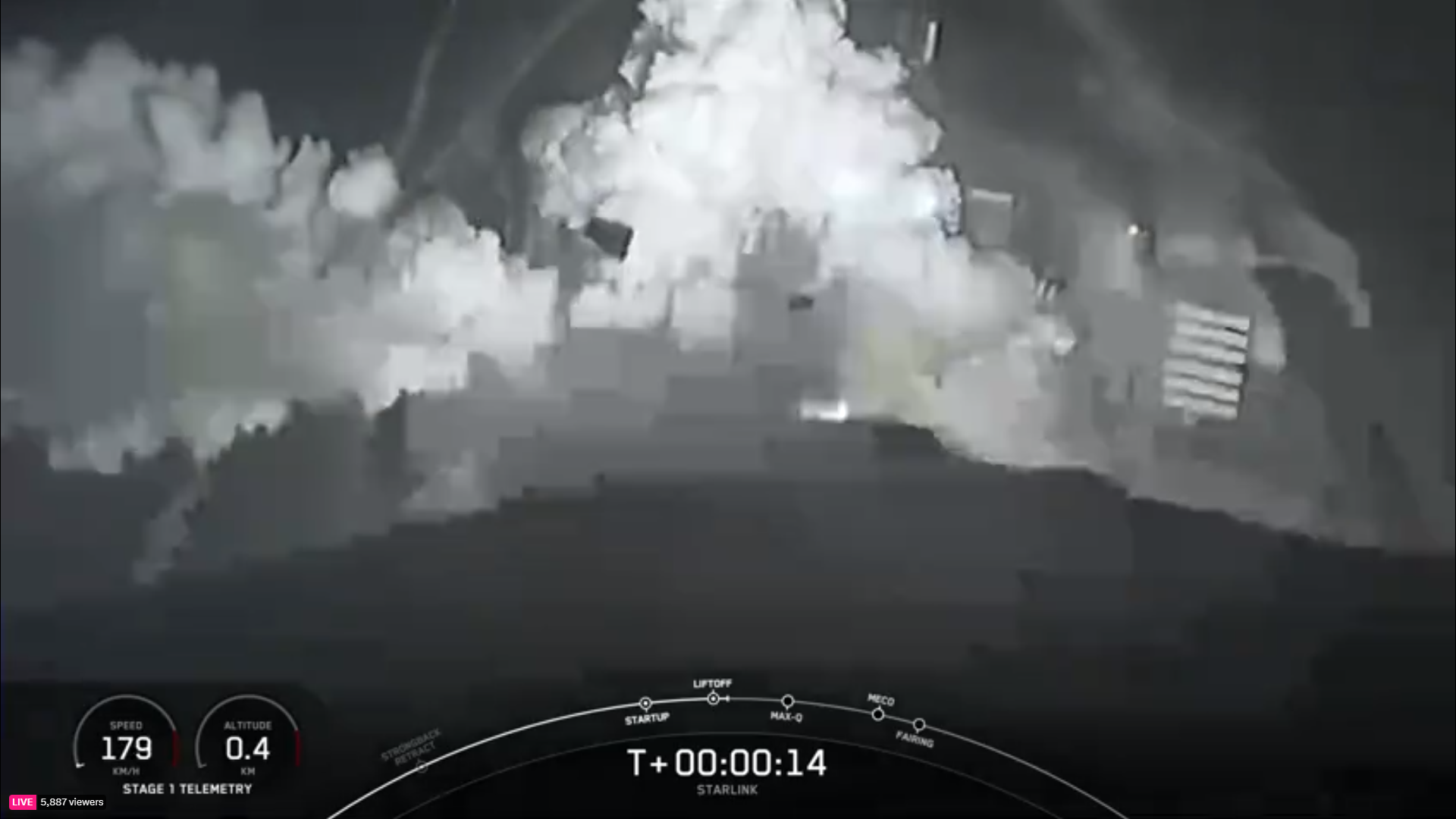
SpaceX has a new “in-service” fleet-leader, following Sunday’s successful just-past-midnight rise of the 18-times-flown B1061 Falcon 9 core from Space Launch Complex (SLC)-4E at Vandenberg Space Force Base, Calif. After last month’s untimely loss-at-sea of her 19-times-used sister B1058—the one-time ride to space of “Bob and Doug”—B1061 now sits at the top of SpaceX’s pile of active operational boosters. Liftoff of the West Coast’s second Falcon 9 mission of 2024 inside the year’s opening two weeks came at 12:59 a.m. PST Sunday, having been postponed from Tuesday, Thursday, Friday and Saturday launch attempts due to unfavorable recovery weather conditions.
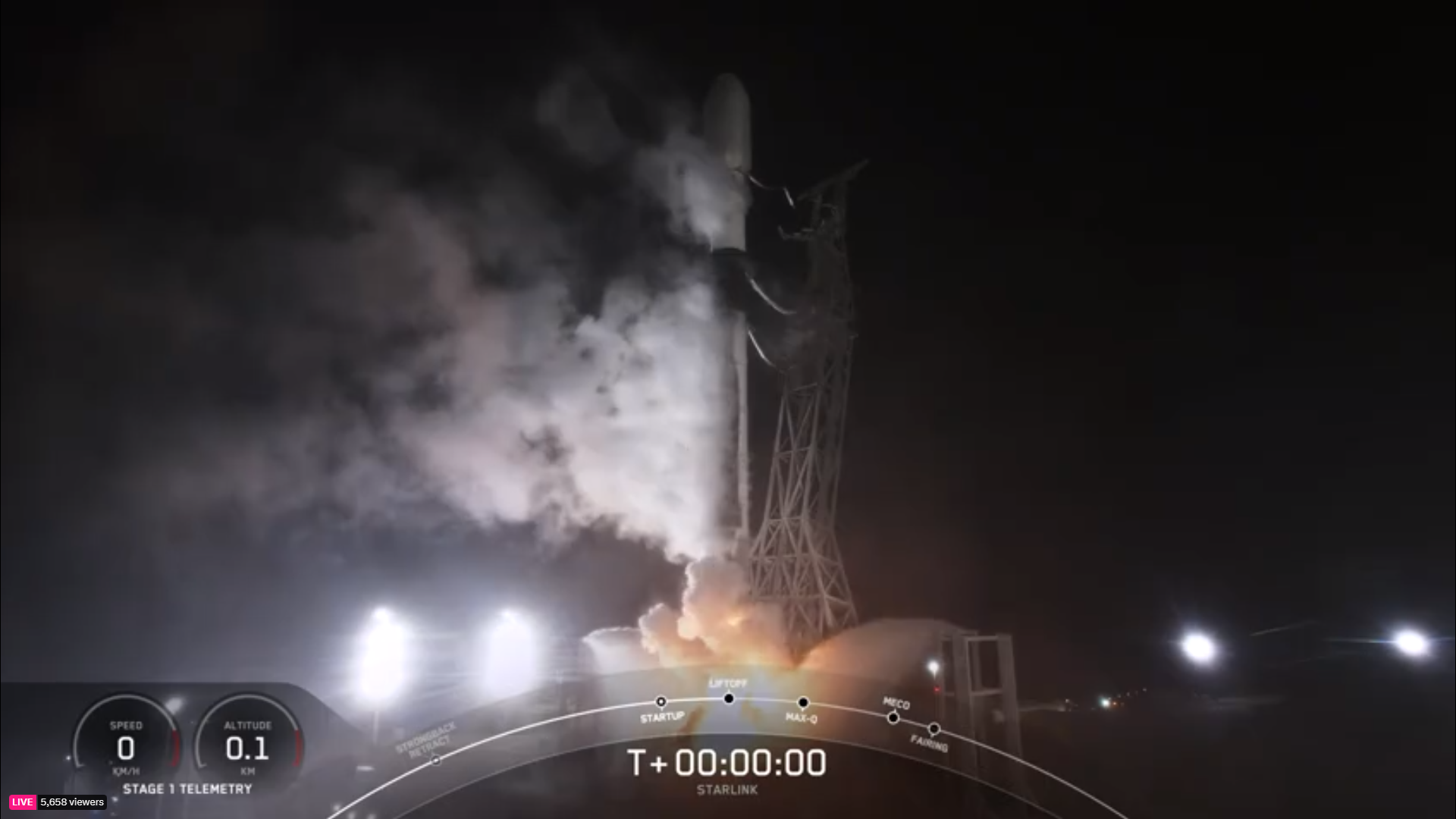
Last night’s launch marks the fourth Falcon 9 flight of the year and the second from mountain-ringed Vandenberg, following on the heels of newcomer B1082’s maiden launch last week with her own 21-strong Starlink payload, which included the first “Direct-to-Cell” satellites to facilitate mobile network providers to offer “seamless global access to texting, calling and browsing” whether “on land, lakes or coastal waters”, without changing hardware or firmware.
As a network, Starlink enables high-speed and low-latency internet provision to 70 sovereign nations and international markets in North and South America, Europe, Asia, Oceania and Africa. Landlocked Eswatini—formerly Swaziland—in southern Africa and Paraguay joined Starlink last month.
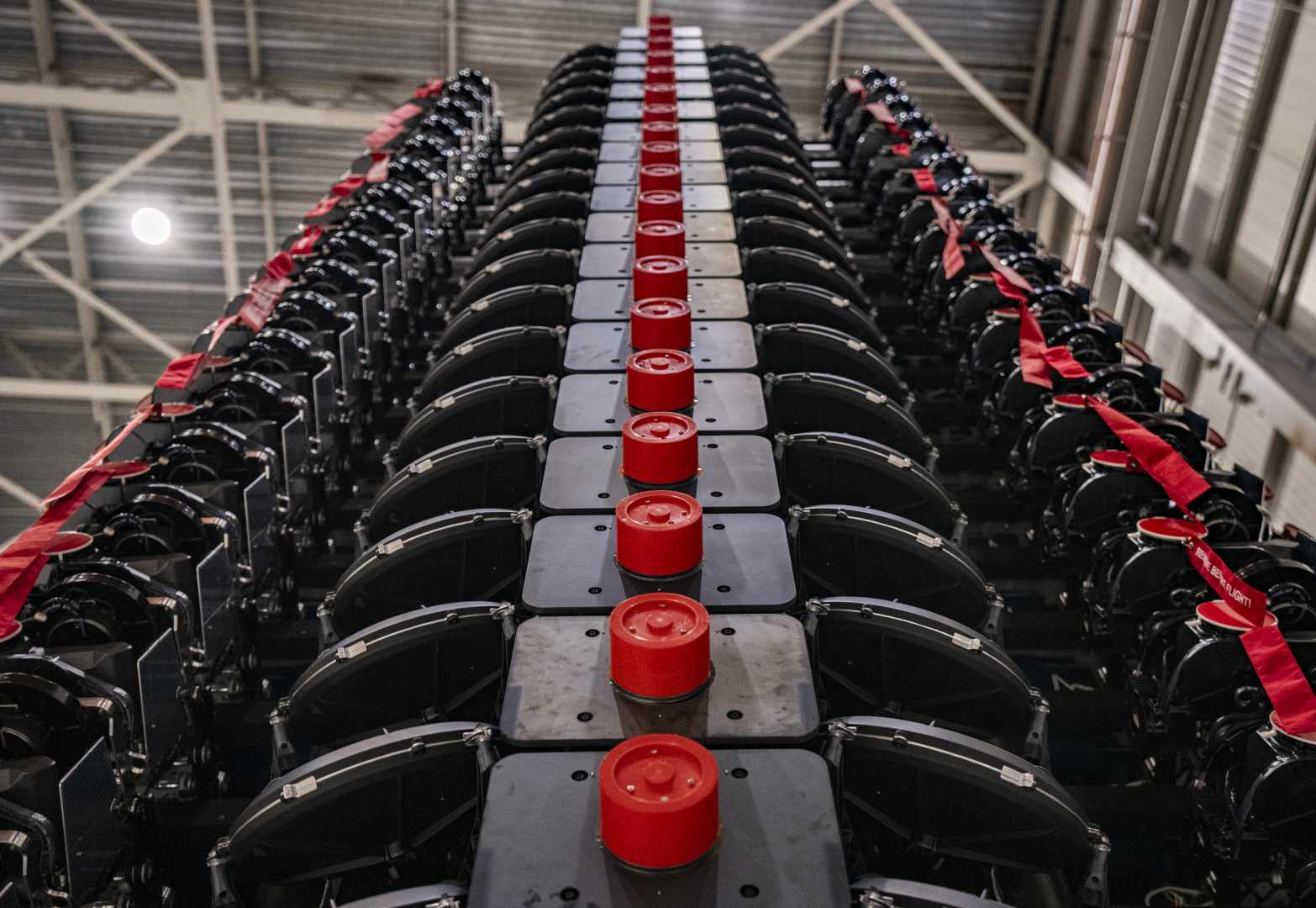
The downsized Starlink “V2 Mini” satellites, first flown last February, boast three to four times greater “usable” bandwidth than earlier Starlink iterations. “V2 Minis include key technologies—such as more powerful phased-array antennas and the use of E-Band for backhaul—which will allow Starlink to provide 4x more capacity per satellite than earlier iterations,” SpaceX explained. “Among other enhancements, V2 Minis are equipped with new argon Hall thrusters for on-orbit maneuvering.”
Florida-based intercity operator Brightline adopted Starlink on its trains earlier in 2023, the first passenger rail service in the world to do so. Additionally, El Salvador’s Ministry of Education has begun integrating Starlink capability into its schools to help close the digital divide between urban and remote rural communities and 50 Rwandan schools are now connected via Starlink’s high-speed internet service.
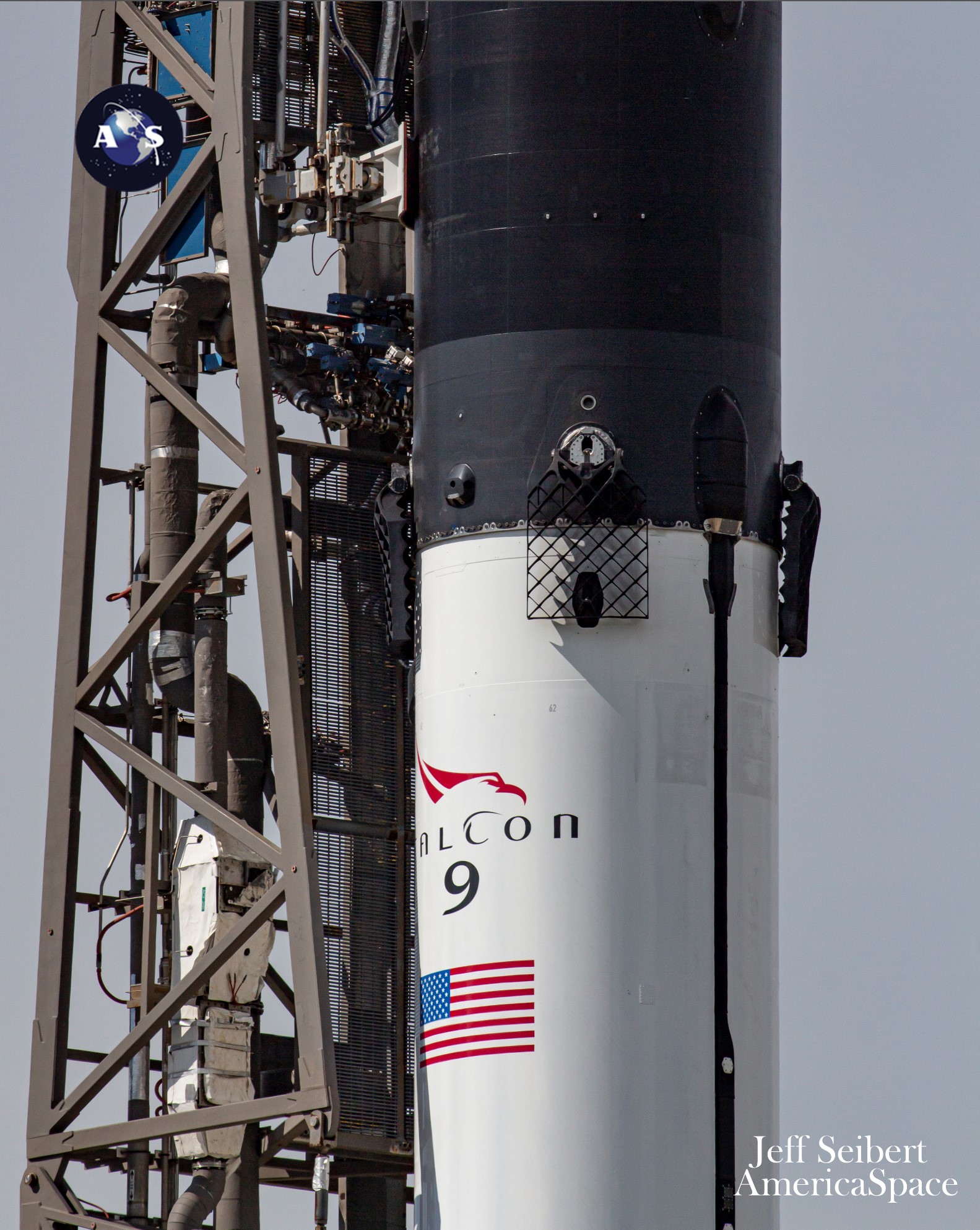
Flying last night’s mission, B1061 becomes only the second Falcon 9 core to reach 18 flights and, following B1058’s demise, she now cements her place as the fleet leader, surpassing sisters B1060 and B1062, each of which has accrued 17 launches. She is one of relatively few “coast-hopping” Falcon 9 boosters, having launched nine times from the East Coast between November 2020 and June of last year, before being transported to the West Coast for the second half of her career, chalking up an additional nine flights between August 2022 and last night.
B1061 entered service more than three years to lift Dragon Resilience and her Crew-1 complement of NASA astronauts Mike Hopkins, Victor Glover and Shannon Walker, together with Japan’s Soichi Noguchi, for their six-month Expedition 64/65 increment to the International Space Station (ISS). That launch marked the first U.S. human spaceflight to occur in the hours of darkness since the end of the Space Shuttle Program and Glover became the first African-American spacefarer to embark on a long-duration mission.
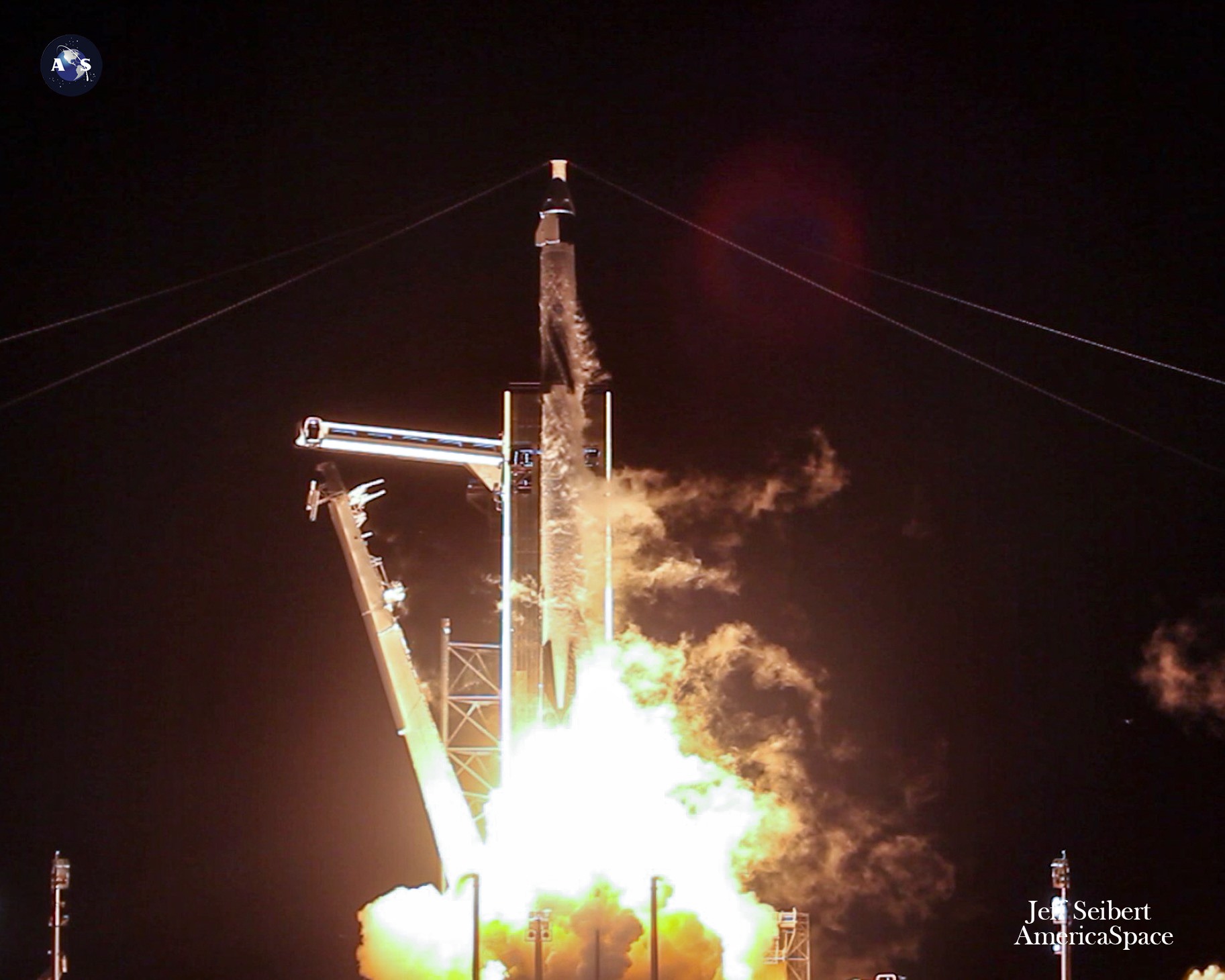
The booster went on to launch NASA’s Shane Kimbrough and Megan McArthur, France’s Thomas Pesquet and Japan’s Aki Hoshide aboard Dragon Endeavour for Crew-2 in April 2021, kicking off their own multi-month ISS increment which concluded after 199 days the following November and spanned Expeditions 65 and 66 to become the longest single mission ever undertaken by a U.S. crewed vehicle. This launch saw B1061 become the first “reused” Falcon 9 ever to carry crew.
Her human-hauling duties over, B1061 settled into a regular routine as a payload lifter. She launched SiriusXM’s heavyweight SXM-8 broadcasting satellite in June 2021, SpaceX’s CRS-23 Cargo Dragon to the ISS the following August and NASA’s Imaging X-ray Polarimetry Explorer (IXPE) in December 2021.
Six additional missions followed in 2022, as she lifted a pair of Starlink batches in February and August and the Transporter-4 and 5 rideshare “stacks” on April Fool’s Day and late May. This was followed by a Globalstar-2 global mobile communications satellite and a possible payload for an undisclosed U.S. Government customer in June and Israel’s EROS-C3 electro-optical surveillance satellite on the second-to-last day of December.
Last year also saw her complete six missions, delivering a further five Starlink payloads and South Korea’s 425 Project Synthetic Aperture Radar (SAR) military satellite into orbit. Although payload masses for several of her flights have gone unannounced by SpaceX, including last night’s mission B1061 has lifted in excess of 356,000 pounds (161,500 kilograms) into orbit, including two Crew Dragons, one Cargo Dragon, a pair of multi-payload Transporter stacks and more than 400 Starlinks.
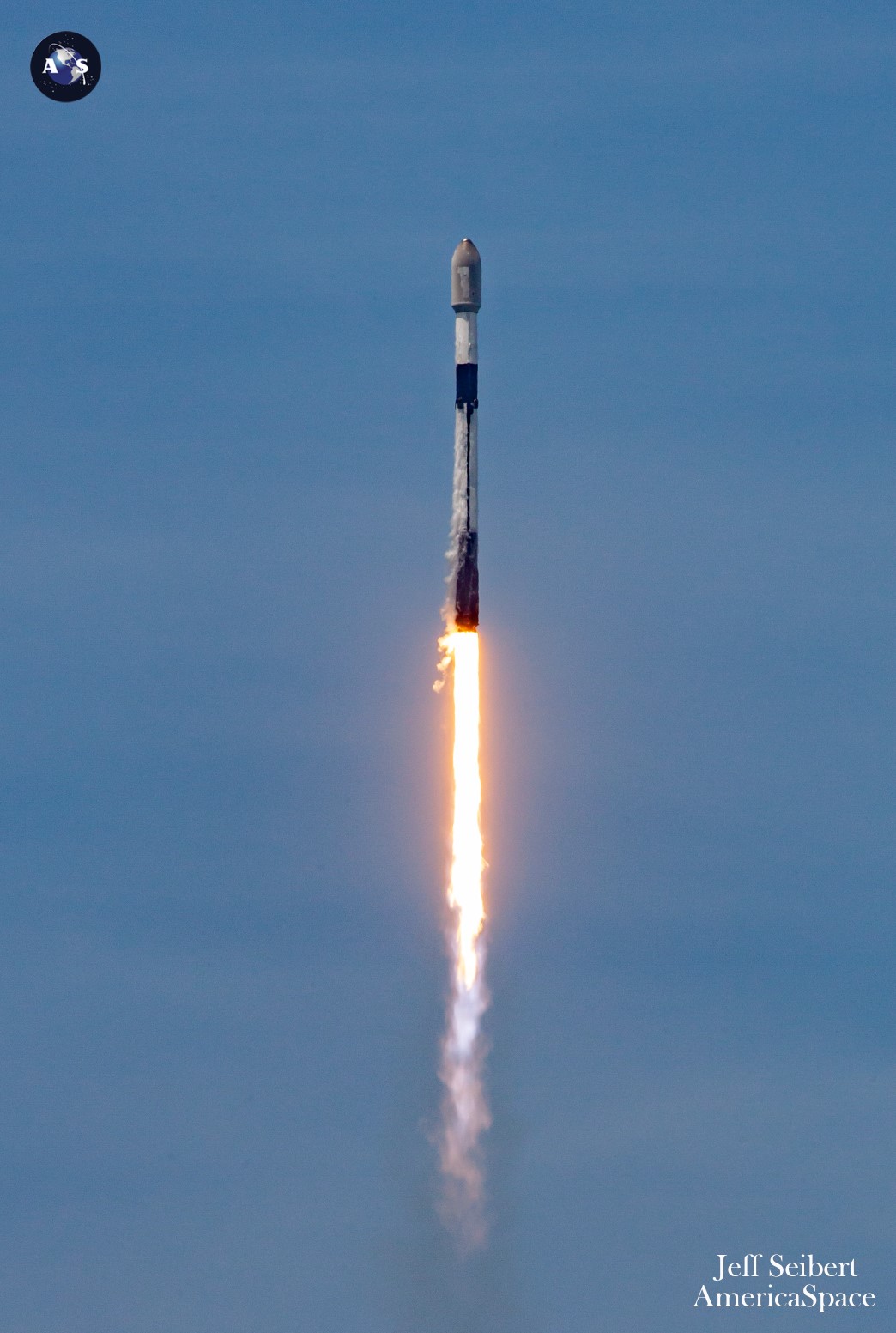
Rising from SLC-4E on time at 12:59 a.m. PST Saturday, she rose ponderously into the night, the exhaust from her nine Merlin 1D+ engines propelling her uphill with 1.5 million pounds (680,000 kilograms) of thrust. B1061 powered the way for the opening 2.5 minutes of ascent, before separating from the rapidly ascending vehicle and descending to a picture-perfect touchdown on the deck of the West Coast-based Autonomous Spaceport Drone Ship (ASDS), “Of Course I Still Love You”, situated offshore in the Pacific Ocean.
Flying two Vandenberg missions and a pair of back-to-back OCISLY booster recoveries in the span of only a week has underscored the impressive cadence that SpaceX will need to keep up in order to achieve a dozen launches per month or up to 144 flights in 2024. Having retrieved B1082 last Wednesday, the drone ship was delayed slightly in its return by high seas and strong winds, eventually making it back to Port of Long Beach with the 15-story booster core aboard last Friday.
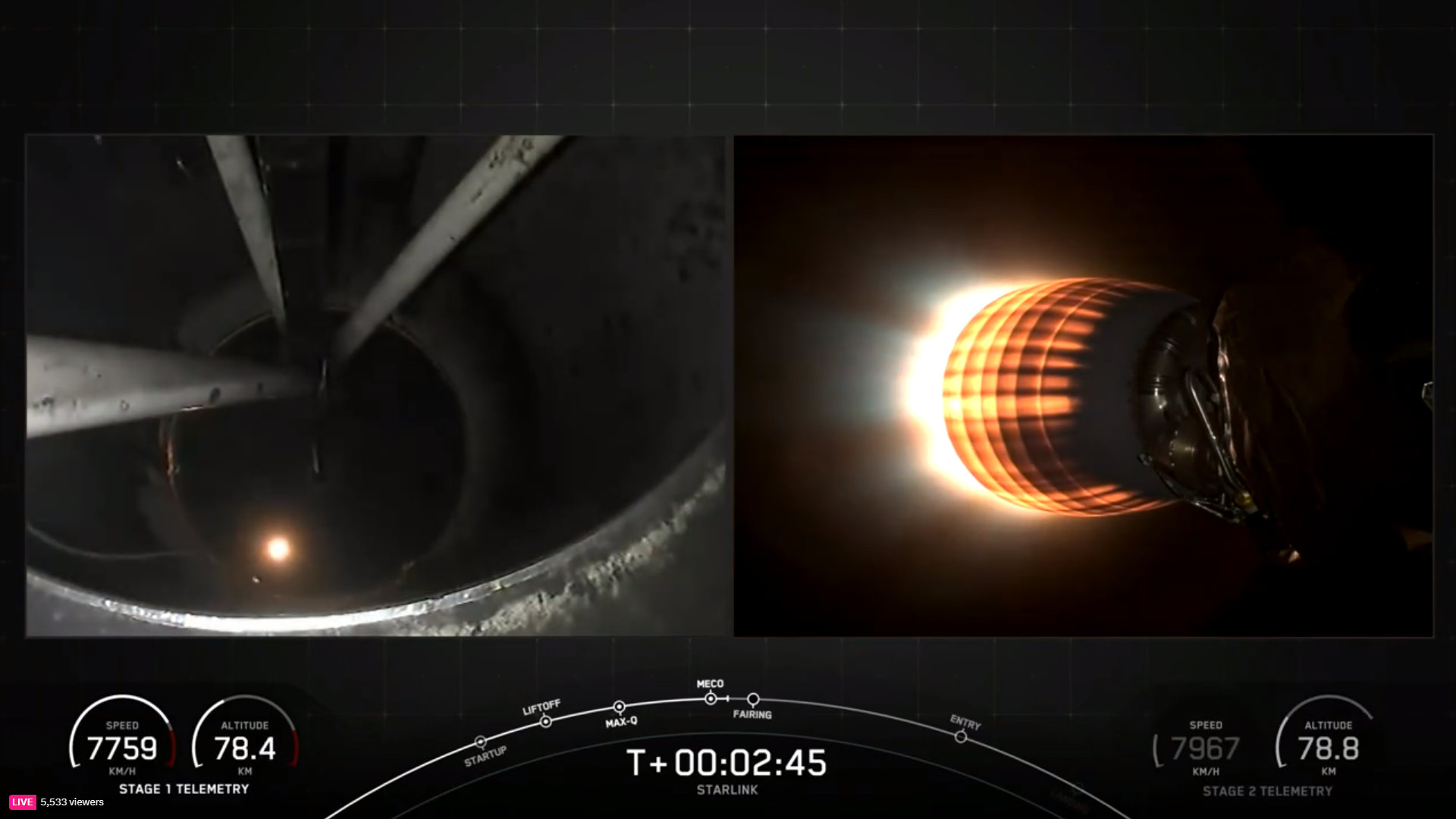
Three days later, on Monday 8th, OCISLY deployed a second time in support of this mission, targeting a recovery location about 400 miles (640 kilometers) offshore. And flying twice from Vandenberg within a span of little more than a week marks one of the shortest Falcon 9 launch-to-launch turnarounds on the West Coast.
With B1061 gone, the single Merlin 1D+ Vacuum engine of the second stage ignited for a standard six-minute “burn” to lift the 22 Starlink satellites—totaling 38,800 pounds (17,600 kilograms)—into low-Earth orbit. Deployment was slated to occur 65 minutes into flight, bringing to 66 the total number of these flat-packed internet communications satellites emplaced into orbit so far this year and over 5,700 since May 2019.
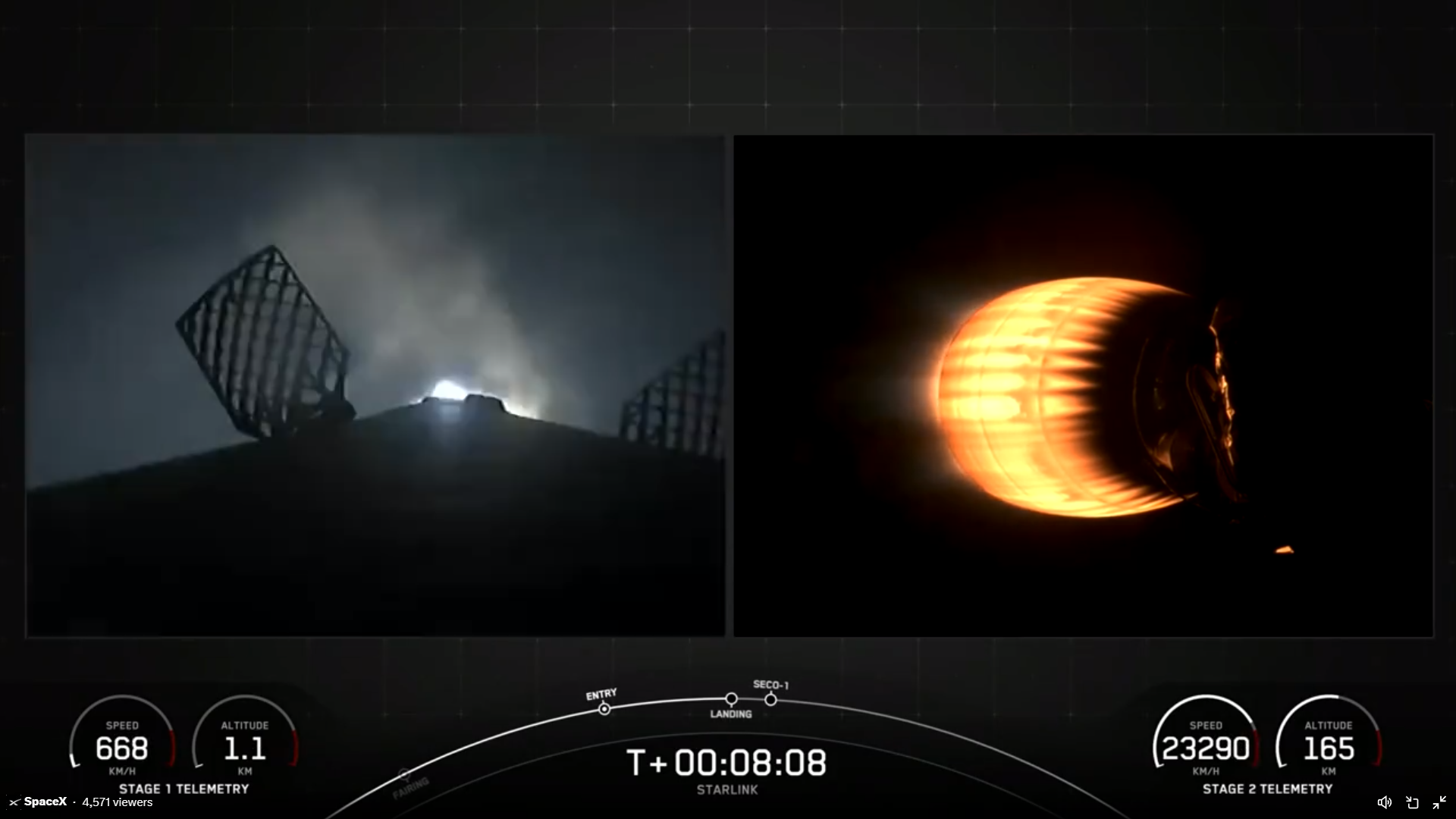
With the completion of last night’s mission, SpaceX draws down the curtain on a week-long “drought” of flights and gears up for a busy few days ahead. Attention now turns to the Space Coast, where B1073 is targeting liftoff from storied Space Launch Complex (SLC)-40 at Cape Canaveral Space Force Station, Fla., during a group of T-0 points extending from 7:27 p.m. EST and 11:25 p.m. EST Sunday, having itself been called off on its first opportunity on Saturday evening.
This upcoming mission, laden with 23 Starlinks, marks the 12th outing of B1073, when entered service back in May 2022 and with Sunday’s flight will have emplaced 297 of these flat-packed internet satellites into orbit. The veteran booster has also lofted the SES-22 and Amazonas Nexus geostationary communications satellites and a lunar-bound mission with Japan’s Hakuto-R Moon lander, the United Arab Emirates (UAE) Rashid rover and NASA’s water-ice-seeking Lunar Flashlight.
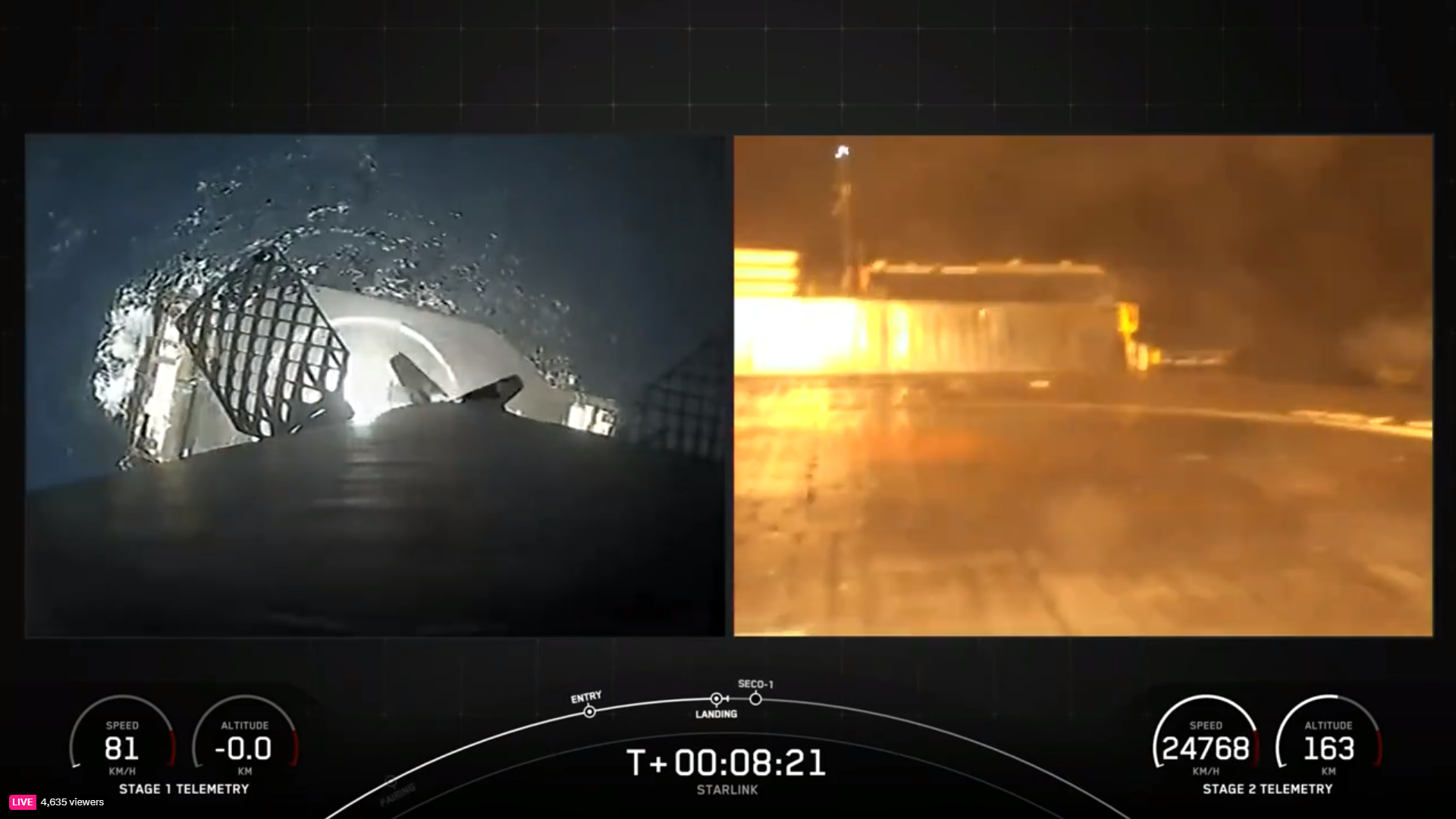
And just last March, on her seventh mission, she became the most flight-seasoned Falcon 9 ever to lift a payload—human or cargo—to the ISS with the CRS-27 Cargo Dragon. In readiness for tonight’s mission, the Autonomous Spaceport Drone Ship (ASDS), “A Shortfall of Gravitas”, departed Port of Long Beach on 11 January, having earlier returned with the B1067 booster after her 7 January launch.
Weather in Florida for Sunday night is currently about 85-percent-favorable, with a slight risk of violating the Thick Cloud Layers Rule. “Late Sunday, a warm front to our south begins to meander north, bringing with it a thick layer of low clouds with embedded showers,” noted the 45th Weather Squadron at Patrick Space Force Base.
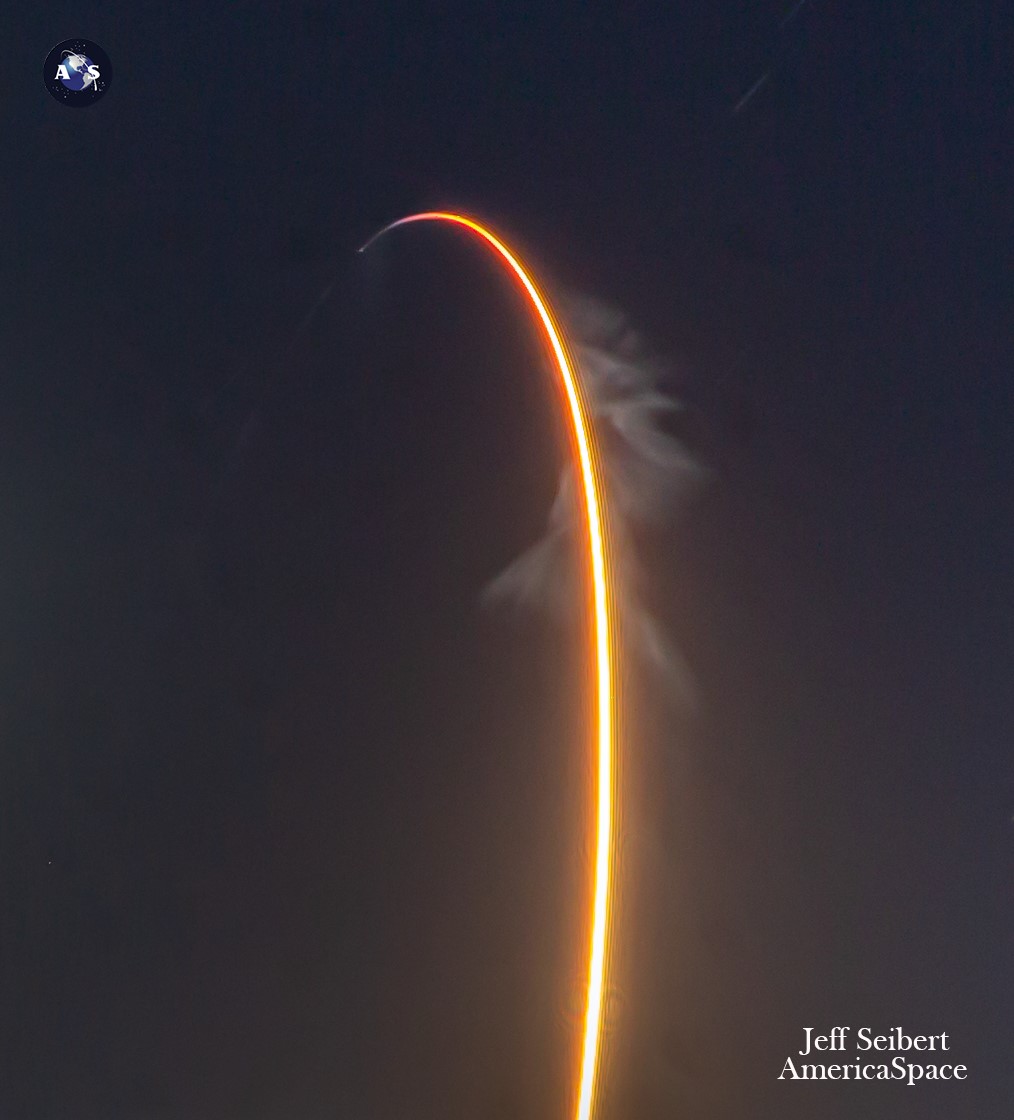
“For the primary launch window, weather looks mostly favorable, with the primary concern being the Thick Cloud Layers Rule,” it was added. “Probability of violation remains low due to the low-altitude tops of the thick cloud layer and expected positioning just to the south of the Spaceport.”
However, a slip until Monday evening will bring a far more troubled meteorological picture, with only a 20-percent probability of being acceptable. “Conditions worsen considerably for a backup attempt Monday evening,” the 45th concluded, highlighting “numerous showers and a few strong storms” which may cause concern “for multiple launch weather constraint violations”.

Also set to fly at 5:11 p.m. EST Wednesday from historic Pad 39A at Florida’s Kennedy Space Center (KSC) will be the B1080 core—making her fifth flight—with AxiomSpace, Inc.’s third all-private research expedition to the ISS, designated “Ax-3”. On Friday, SpaceX noted that the Ax-3 crew’s Dragon Freedom spacecraft had arrived at the 39A hangar ahead of integration atop the booster.
Led by former ISS commander, America’s most seasoned spacewalker and AxiomSpace Chief Astronaut Mike Lopez-Alegria, the Ax-3 crew includes flyers from Italy (Pilot Walter Villadei), Sweden (Mission Specialist Marcus Wandt) and the first national space traveler of Türkiye (Alper Gezeravcı). They are targeting docking at the ISS at 5:15 p.m. EST Friday and will spend about two weeks in space, performing a wide range of scientific research, technology demonstrations and educational outreach alongside the station’s incumbent Expedition 70 crew.
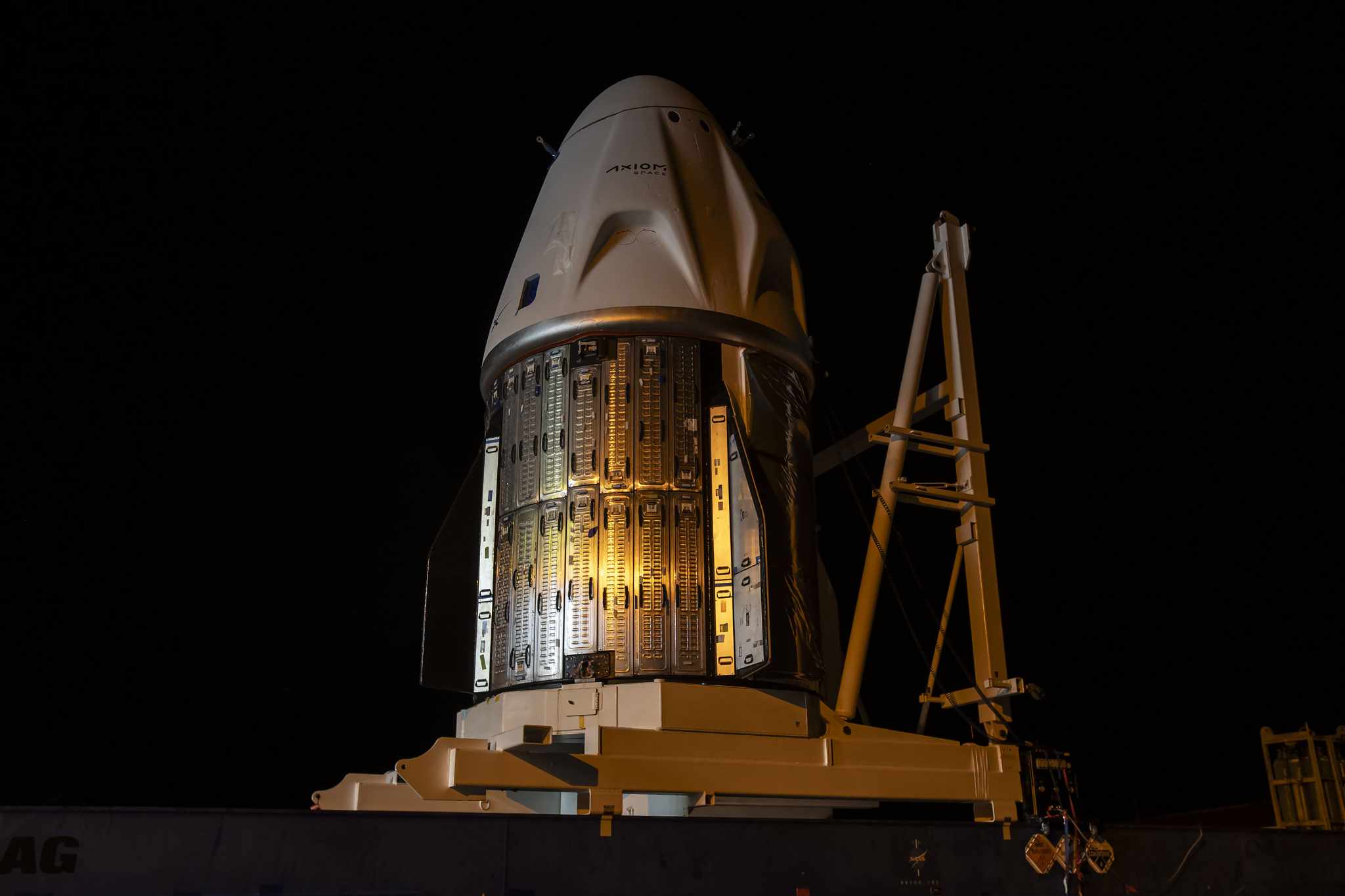
They will fly Dragon Freedom, which is embarking on her third trip to space, having previously supported the six-month stay of Crew-4 Commander Kjell Lindgren, Bob “Farmer” Hines and Mission Specialists Jessica Watkins and Italy’s Samantha Cristoforetti between April and October of 2022 and more recently AxiomSpace’s Ax-2 commercial mission last May, crewed by former NASA astronaut Peggy Whitson, airshow pilot John Shoffner and Ali Al-Qarni and Rayyanah Barnawi of Saudi Arabia, the latter of whom became the first Arab woman to voyage into space.




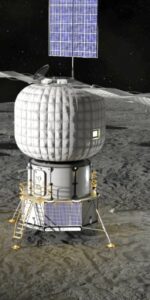
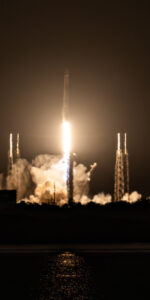
2 Comments
Leave a Reply2 Pings & Trackbacks
Pingback:SpaceX Targets Three Days of Falcon 9 Launches, Starting Tonight - SPACERFIT
Pingback:SpaceX Flies Back-to-Back Falcon 9 Missions, Looks to Month-Ending Tenth Launch Tomorrow - AmericaSpace